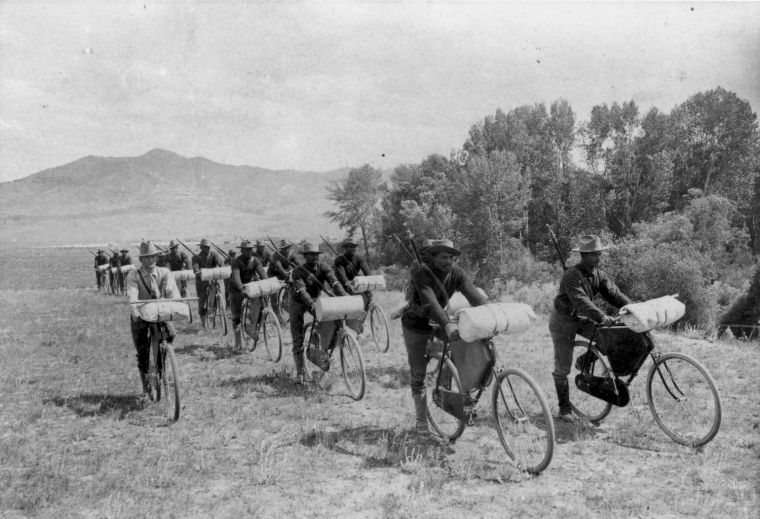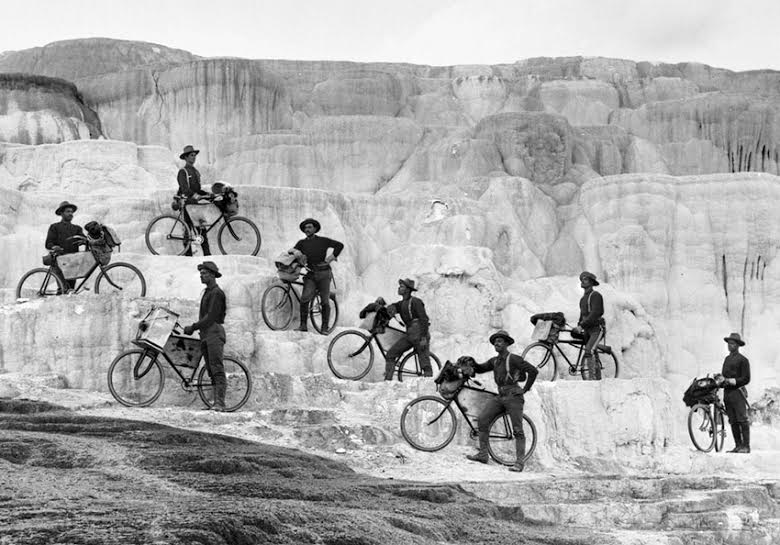The month of February highlights achievements and contributions made by African Americans throughout history. A look back reveals that African Americans have played a significant role in the world of cycling. Their contributions helped shape the development of the bicycle and their riding skills set benchmarks for future cyclists.

Soldiers from the 25th Infantry Bicycle Corps that biked 1,900 miles in 41 days
In the 19th century, there were several African American inventors that played significant roles in shaping the evolving cycling industry. These inventors include Matthew Cherry, Jerry Certain, and Isaac Johnson.
Mathew Cherry made improvements to the design of velocipede, which was an early, pedal-less version of the modern bicycle. He is also known for inventing and patenting the tricycle, which many of us use to this day. Jerry Certain designed and patented ‘parcel carriers’ that could be attached to several different parts of the bicycle in 1899. Isaac Johnson, while not the first person to invent the bicycle frame, was the first African American to invent and patent a bicycle frame that could be folded or taken apart for easy storage.
Little is known about the lives of these inventors, which in and of itself speaks to the discrimination that black folks have continually experienced in the United States. The records of these patents that survive help to tell a piece of their story and of their contributions to transportation and innovation.

Jerry Certain’s parcel carriers (left) and Matthew Cherry’s tricycle (right)
After the Civil War, the United States Military formed several all-black infantry units, commonly known as “Buffalo Soldiers.” Depicted in the photograph below is the all-black, 25th Infantry Bicycle Corps who were tasked with riding 1,900 miles from Montana to Missouri by bicycle.
This unit was testing the bicycle’s suitability for cross-country troop transport. The men in the 25th journeyed across the Rocky Mountains and endured extreme weather conditions across vast landscapes, often with no road to ride on. Traveling at an average speed of 6 mph, it took the unit 41 days to complete the trip. This was a feat of human strength and resolve.

Eight soldiers from the 25th at Yellowstone National Park in the summer of 1896
Ready to learn more? Join Indego and the Bicycle Coalition on a group ride to the African American Museum in Philadelphia! Admission to the museum is FREE for all riders and the use of Indego bikes is free to everyone that registers (feel free to bring your own bike if you’d like!). Click the button below to register for the ride and/or reserve your Indego bike!
Date: Sunday, February 24th
Time: 1:00 to 3:00 PM
WEB SOURCES
- Mathew A. Cherry. (2015). The blackinventor.com website. Retrieved, February 11, 2019, from http://blackinventor.com/matthew-cherry
- Certain, J. M. United States Patent Number US639708A. Retrieved from https://patents.google.com/patent/US639708A/en
- Did You Know This Black Man, Isaac R. Johnson, Created and Patented the Bicycle Frame? https://urbanintellectuals.com/2017/12/14/isaac-r-johnson-bicycle-frame/
- 25th Infantry Bicycle Corps (1896-97). Blackpast. Caelen Anacker – https://www.blackpast.org/aaw/vignette_aahw/25th-infantry-bicycle-corp-1896-97/
The Better Bike Share Partnership is an effort led by the City of Philadelphia that works to ensure that Indego bike share is accessible to all Philadelphians. The Better Bike Share Partnership is funded by the JPB Foundation.

Leave a Reply